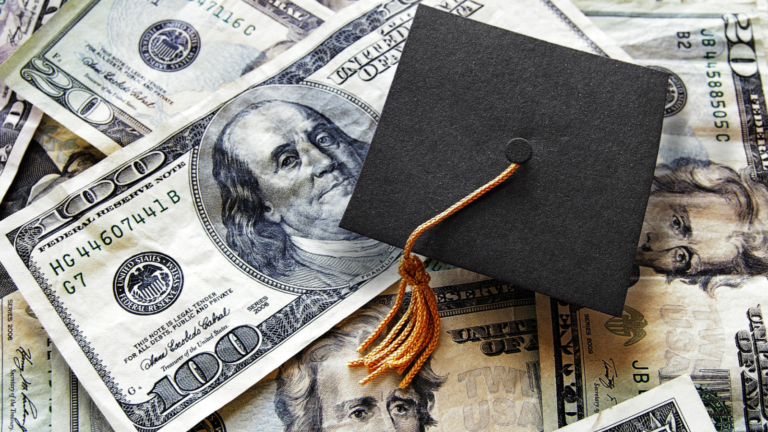After a three-and-a-half-year break, federal student loan borrowers must brace for the return of interest and loan payments in September and October. During this time, significant changes have occurred, including shifts in loan servicers and the introduction of a more favorable repayment plan for those with low incomes. Borrowers now face the challenge of adapting to these transformations.
President Joe Biden unveiled in July a revised student loan relief plan after the Supreme Court rejected the previous $430 billion debt forgiveness proposal. Biden will use the 1965 Higher Education Act to enable Secretary Miguel Cardona to modify, waive or forgive loans as needed.
Biden and the Department of Education introduced a plan for federal student loan borrowers with loan forgiveness up to $20,000. Eligible Americans can apply by Dec. 31.
An Understanding of the Student Loan Debt Relief Plan
The Biden-Harris administration has repeatedly extended the student loan repayment pause due to pandemic-related economic challenges, meaning no one with federally held loans has had to make payments since President Biden’s inauguration.
The Biden-Harris Administration’s single-use student debt relief plan aims to mitigate pandemic-induced financial hardships, ease the return to repayment, and assist borrowers at risk of delinquency or default. Congress has prohibited further extensions of the payment pause, with interest resuming as of Sept. 1, and payments starting in October. Borrowers will receive advance notifications before payments recommence.
The U.S. Department of Education will offer up to $20,000 in debt relief to Pell Grant recipients and up to $10,000 to non-Pell Grant recipients, targeting those at risk of delinquency or default as payments restart. Eligibility includes an individual income under $125,000 or a household income under $250,000.
The Biden-Harris administration plans to introduce a new income-driven repayment plan aimed at significantly reducing monthly payments for lower- and middle-income borrowers.
Designed to supplant the existing REPAYE income-driven repayment program, the White House rolled out the SAVE initiative earlier this summer. This initiative proposes several changes:
- Reduce monthly payments to 5% of discretionary income for undergraduate loans, down from the previous 10%.
- Increase the income protection threshold, ensuring borrowers earning under 225% of the federal poverty level won’t make monthly payments.
- Forgive loan balances after 10 years (instead of 20) for borrowers with balances of $12,000 or less.
- Cover unpaid monthly interest to prevent loan balance growth when payments are low or $0 due to low income.
The Biden-Harris administration is expediting these student loan improvements.
Who Is Eligible?
Borrowers with federal direct loans or federal family education loans who have completed 20 to 25 years of qualifying payments may be eligible for loan forgiveness, primarily those on the Income-Contingent Repayment (ICR) plan. ICR, established in 1994, is the key plan for forgiveness. Moreover, the other repayment plans like IBR, PAYE and REPAYE haven’t been around long enough for borrowers to reach the 20-year or 25-year mark required for forgiveness.
The Department of Education has begun notifying eligible borrowers, and this will continue every two months for those who qualify. By next year, the department plans to update all borrowers’ payment counts, allowing those on income-driven repayment plans to check their qualifying months with loan servicers.
So What
In two weeks, millions of Americans face student loan payments resuming after a three-year pause, with interest already accruing. Kim Miller from LSS Financial Counseling noted an increase in inquiries about the end of the payment pause, with concerns about affording payments, especially given high living costs.
In her statement to WCCO, she expressed concerns about affordability, highlighting how people redirected funds from student loans to essentials like food, housing and transportation. Now, these individuals must readjust their budgets.
However, the Biden administration will introduce a 12-month “on-ramp repayment program” to prevent defaults for struggling borrowers. The Department of Education won’t report missed payments to credit agencies for a year, aiming to ease the transition back to regular payments. Biden is determined to pursue alternative paths for student debt relief, emphasizing its benefits for the economy and individuals’ dreams.
Biden highlighted additional relief efforts, such as reducing monthly payments from 10% to 5% of discretionary income in the income-driven repayment plan, saving the average borrower $1,000 annually.
On the date of publication, Chris MacDonald did not have (either directly or indirectly) any positions in the securities mentioned in this article. The opinions expressed in this article are those of the writer, subject to the InvestorPlace.com Publishing Guidelines.

